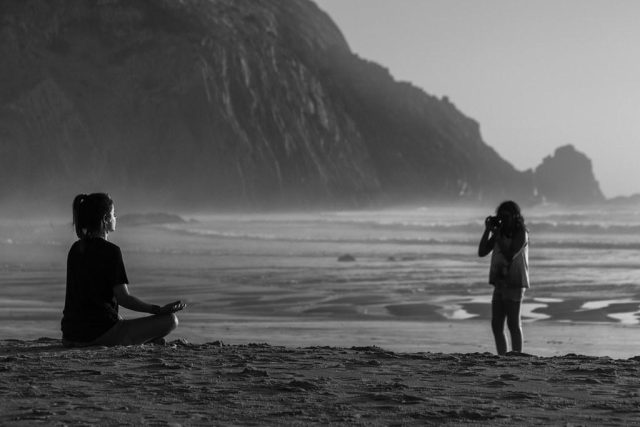In today’s fast-paced world, tension has become an almost ubiquitous companion in our daily lives, affecting our mental clarity, emotional well-being, and physical health. As stress levels rise, many individuals are turning to ancient practices for relief, with yoga emerging as a particularly effective solution. This gentle yet powerful discipline offers a holistic approach to reducing tension, blending mindful movement, breath control, and meditation to restore balance and serenity. In this article, we will explore the best practices for incorporating yoga into your routine to alleviate stress and promote a sense of inner peace. Whether you’re a seasoned yogi or a curious beginner, our empathetic guide aims to provide you with practical tips and insights, empowering you to harness the transformative power of yoga and reclaim a more harmonious life.
Understanding the Connection Between Yoga and Tension Relief
Incorporating yoga into your daily routine can be a transformative practice, especially when aiming to alleviate tension. The art of yoga lies in its ability to harmonize the mind and body, helping you release stress through a series of mindful movements and controlled breathing exercises. By focusing on the present moment, you can cultivate a sense of peace and calm, effectively reducing physical and mental tension.
Here are some key yoga practices to consider for tension relief:
- Mindful Breathing: Begin with simple breathing exercises like Pranayama, which can help calm the nervous system and reduce stress levels.
- Gentle Poses: Engage in restorative poses such as Child’s Pose or Corpse Pose, which encourage relaxation and tension release.
- Consistent Practice: Dedicate time each day for yoga, even if it’s just a short session, to build a habit of relaxation and mindfulness.
Remember, the goal is not to perfect each pose but to create a personal space for tranquility and self-awareness. By regularly practicing yoga, you can develop a deeper understanding of how your body responds to stress and learn to manage it more effectively. This journey towards tension relief is not only about physical flexibility but also about nurturing a balanced state of mind.
Choosing the Right Yoga Poses for Your Tension Points
Understanding your body’s tension points is key to selecting the most effective yoga poses. These areas, often burdened by stress and poor posture, can benefit from targeted movements that encourage relaxation and improved circulation. Here’s how you can tailor your practice:
- Identify Your Tension Areas: Start by paying attention to where you feel tightness or discomfort. Common tension points include the neck, shoulders, lower back, and hips. Once you’ve pinpointed these areas, you can choose poses that directly address them.
- Choose Poses Mindfully: For neck and shoulder tension, consider incorporating poses like Cat-Cow or Thread the Needle to promote gentle stretching and release. If your lower back is the problem area, Child’s Pose and Supine Twist can be incredibly soothing.
- Listen to Your Body: Each practice should be an opportunity to tune in to your body’s needs. As you move through poses, notice any sensations of relief or discomfort. Adjust your alignment or use props like blocks and straps to support and enhance your experience.
Remember, yoga is a personal journey. What works for one person might not work for another, so it’s essential to stay curious and open-minded as you explore different poses. With consistent practice and mindful attention, you can effectively reduce tension and cultivate a deeper sense of ease in your body.
Creating a Personalized Yoga Routine for Maximum Relaxation
Designing a yoga routine tailored to your needs can significantly enhance your relaxation and help alleviate tension. Begin by identifying your personal goals, such as reducing stress, improving flexibility, or enhancing mindfulness. Once you’ve pinpointed your objectives, select poses that cater specifically to these goals. Gentle stretches like the Cat-Cow pose or Child’s Pose are excellent for easing tension in the back and neck, while the Legs-Up-the-Wall pose is perfect for calming the mind and relieving tired legs.
Incorporating breathing exercises, or pranayama, into your routine is another effective way to enhance relaxation. Consider practicing techniques such as the 4-7-8 breath or alternate nostril breathing, which are known for their calming effects on the nervous system. These practices can be seamlessly integrated between poses or used as a standalone practice to help center your mind.
- Consistency: Aim to practice your routine at the same time each day to create a habit that reinforces relaxation.
- Environment: Set up a peaceful space free from distractions, perhaps with soothing music or calming scents.
- Listening to Your Body: Always adapt poses to your comfort level, using props like blocks or straps to avoid strain.
Remember, the essence of a personalized yoga routine lies in its ability to meet you where you are, both physically and mentally. Embrace this journey with compassion and patience, and allow yourself the time to unwind and reconnect.
Incorporating Mindfulness and Breathing Techniques in Your Practice
Integrating mindfulness and breathing techniques into your yoga practice can be a transformative approach to alleviating tension. These techniques allow you to cultivate a deeper connection between your mind and body, fostering a sense of inner calm and clarity. Begin by focusing on your breath, allowing it to be your anchor during your practice. As you move through each pose, pay attention to the rhythm of your inhalations and exhalations, ensuring they are deep and even. This conscious breathing helps to regulate your nervous system, reducing stress and anxiety.
To further enhance your practice, consider incorporating the following mindfulness strategies:
- Body Scan: As you settle into your practice, take a moment to perform a body scan. Start from the top of your head and work your way down to your toes, noticing any areas of tension or discomfort. Breathe into these areas, using your breath to gently release any tightness.
- Mindful Movement: Move through your yoga sequence with intention, paying close attention to how each pose feels in your body. Notice the subtle shifts in your muscles and joints, and adjust your alignment as needed to find ease and balance.
- Gratitude Meditation: End your practice with a short gratitude meditation. Reflect on the positive aspects of your practice and express gratitude for the time and space to connect with yourself.
By embracing these techniques, you create a more profound and peaceful yoga experience, allowing tension to melt away and leaving you feeling rejuvenated and centered.








































